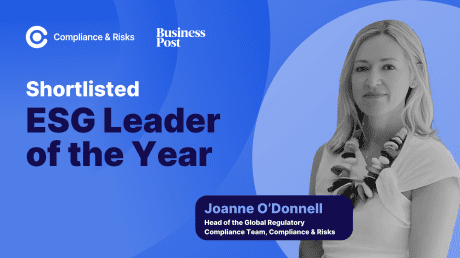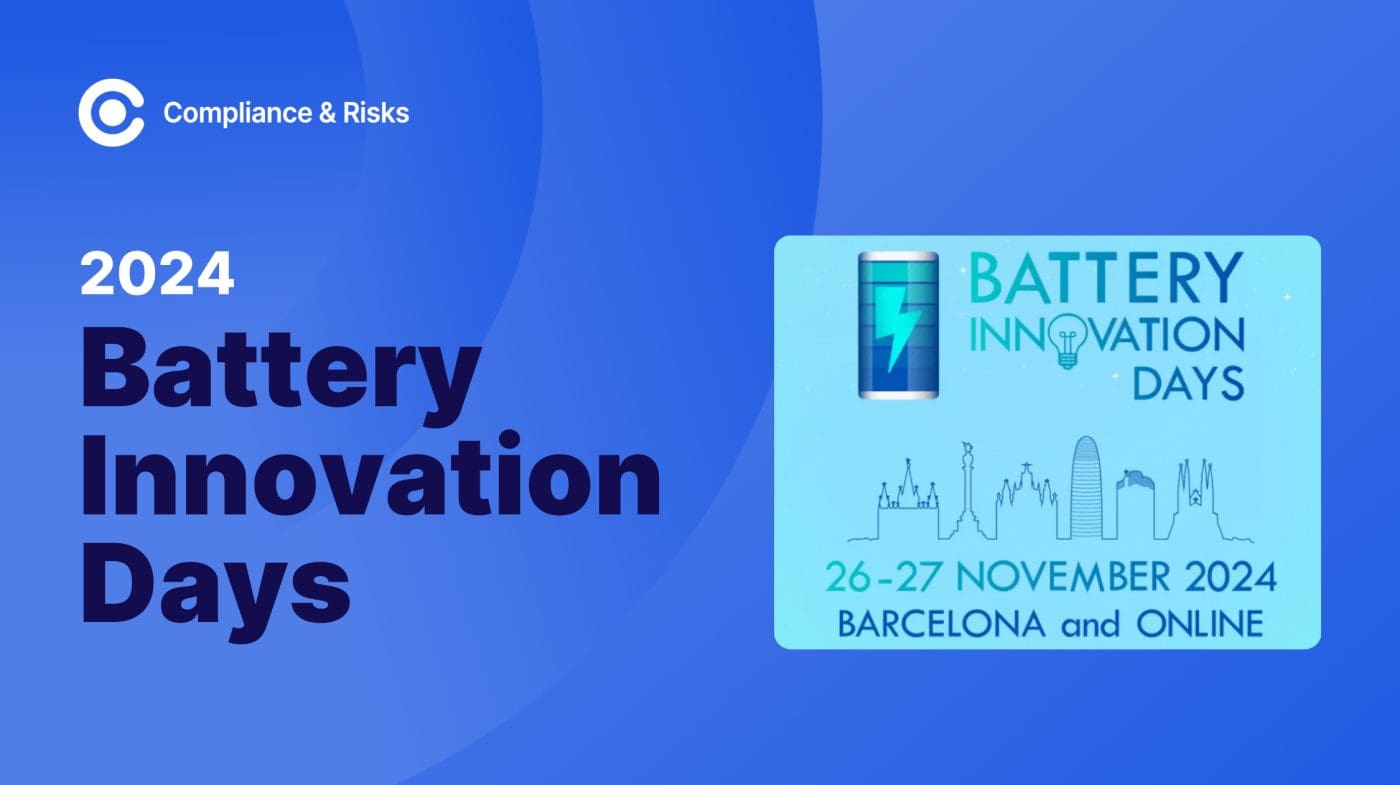
Highlights from Battery Innovation Days (BID) 2024

This blog was originally posted on 11th December, 2024. Further regulatory developments may have occurred after publication. To keep up-to-date with the latest compliance news, sign up to our newsletter.
AUTHORED BY DILA ŞEN, GLOBAL REGULATORY & REQUIREMENTS COMPLIANCE SPECIALIST, COMPLIANCE & RISKS
Enforcement is Key to Product Safety
The Battery Innovation Days (BID) 2024 held on November 26-27, 2024, in Barcelona, Spain, was an enlightening experience that brought together a diverse group of stakeholders from the battery industry. The event was a pivotal platform for discussing the future of battery research and innovation in Europe.
This blog will focus on the Closing Session on “EU’s Battery Policy: Navigating Today’s Geopolitical Landscape”. This session was crucial as it addressed the complex interplay between European battery policies and the current geopolitical challenges, particularly in light of increasing competition from China and the USA. The insights shared during this session provided valuable context for understanding how Europe can enhance its battery ecosystem amidst these challenges, making it a focal point of our discussion.
Batteries made in America – The battery ecosystems in the USA and Canada
The Battery Innovation Days (BID) 2024 provided a comprehensive overview of the evolving battery ecosystems particularly focusing on the USA and Canada. Presented by Stefan Wolf, Senior Consultant at VDI/VDE Innovation + Technik GmbH, the session highlighted critical developments, challenges, and opportunities shaping the battery landscape in these regions. Below are key takeaways that can be integrated into a broader understanding of the current state of battery innovation.
The U.S. government has provided massive support for the battery value chain, but there are uncertainties regarding future policies. The political landscape is characterized by:
- Financial Incentives: The Inflation Reduction Act (IRA) has significantly boosted investments but comes with protectionist measures that could complicate international trade.
- Market Stagnation Risks: Experts predict potential stagnation in the EV market until 2026 due to political uncertainties and evolving regulations.
- Focus Areas: The U.S. is broadening its strategic focus to include new chemistries, heavy-duty batteries, and recycling initiatives.
Opportunities for Europe
The session also provided an external view of the European battery ecosystem, which is characterized by both strengths and weaknesses:
Strengths:
- Regulatory leadership serves as an inspiration for other regions.
- Advanced sustainability commitments are embedded within battery strategies
Weaknesses:
- High production costs relative to international competitors.
- The complex bureaucracy can hinder rapid innovation
To enhance competitiveness, Europe must harmonize its industrial policies, improve incentives for capital expenditures (CAPEX), and streamline its regulatory environment.
Europe between a rock and a hard place – How can Europe compete?
Markus Hackmann, Managing Director of P3 Group, delivered an insightful presentation that examined the current challenges and dynamics facing the battery industry, particularly about China’s growing dominance.
Current State of the Battery Industry
Hackmann emphasized that the European battery sector is at a critical juncture, facing significant challenges as it attempts to compete with established players in China and the USA. The presentation outlined several key issues affecting European manufacturers:
- Bureaucratic Challenges: The EU is burdened by high levels of bureaucracy, which complicate and prolong processes necessary for compliance with environmental regulations and permits. This bureaucratic landscape contrasts sharply with the more streamlined processes observed in China and the United States.
- Incentive Discrepancies: European manufacturers are struggling to find attractive incentives comparable to those offered by the Inflation Reduction Act (IRA) in North America and subsidies available in China. This lack of clear and predictable incentives hampers competitiveness.
- High Operating Costs: European countries, particularly Germany, face significantly higher energy and labour costs compared to their counterparts in Asia and North America. This economic disadvantage further complicates efforts to establish a robust battery manufacturing base.
- Demand Fluctuations: A slowdown in battery demand within Western markets has led to increased cost pressures and margin constraints for manufacturers, exacerbating existing challenges.
- Vertical Integration Limitations: The availability of raw materials is a critical bottleneck for achieving deep vertical integration in Europe’s battery value chain. The dominance of Chinese firms in raw material processing and equipment manufacturing limits European companies’ ability to secure essential supplies.
Regulatory Burdens
Hackmann highlighted how compliance with new regulations, such as the Battery Passport and the German Supply Chain Due Diligence Act, adds approximately 3% to cell production costs. These additional costs stem from the need to meet stringent requirements that increase overall operational expenses for manufacturers.
Strategic Responses and Opportunities
Despite these challenges, Hackmann outlined potential pathways for Europe to regain its competitive edge:
- Industrial Policy Enhancement: The European Union’s Green Deal Industrial Plan aims to simplify regulations and enhance incentives for clean technology manufacturing. Key components include:
-Predictable regulatory frameworks.
-Accelerated permitting processes for critical raw materials.
-Increased funding support through various EU programs.
- Focus on Local Sourcing: The Critical Raw Materials Act (CRMA) emphasizes local sourcing of materials, which could reduce dependency on external suppliers and enhance supply chain resilience.
- Investment in Innovation: To remain competitive, Europe must invest in advanced technologies and foster partnerships that enhance technological expertise within the region. This includes attracting joint ventures and start-ups that can drive innovation.
- Streamlining Bureaucracy: Reducing bureaucratic complexity will be essential for improving operational efficiency and enabling quicker responses to market demands.
Key Insights from Battery Innovation Days 2024
- Geopolitical Challenges and Competitive Disadvantages: The presentations highlighted the increasing dominance of China in the global battery market, which poses significant challenges for European manufacturers. Markus Hackmann pointed out that high operating costs, bureaucratic hurdles, and a lack of attractive incentives compared to the U.S. and Chinese markets hinder Europe’s ability to compete effectively. This geopolitical landscape necessitates a reevaluation of strategies to enhance Europe’s position in the battery supply chain.
- Regulatory Burdens Impacting Costs: The implementation of stringent regulations, such as the Battery Passport and the German Supply Chain Due Diligence Act, adds approximately 3% to cell production costs in Europe. Hackmann emphasized that while these regulations aim to promote sustainability and responsible sourcing, they also contribute to higher operational expenses, making it more difficult for European manufacturers to remain competitive against their international counterparts.
- Investment Trends in North America: Stefan Wolf’s presentation revealed that North America is experiencing a surge in battery investments, with the USA alone announcing $155 billion in funding, leading to significant job creation. This investment is driven by active industrial policies and financial incentives like the Inflation Reduction Act, which contrasts sharply with Europe’s slower pace in establishing similar support mechanisms. The focus on manufacturing and recycling within North America highlights a strategic shift that Europe must address to retain its competitiveness.
- Opportunities for Collaboration and Learning: Canada’s position as a rising player in the battery industry presents opportunities for collaboration with Europe. Canadian stakeholders expressed interest in learning from European experiences to develop their own battery ecosystem. This willingness to cooperate could foster partnerships that enhance innovation and strengthen supply chains on both sides of the Atlantic.
- Need for Streamlined Policies and Incentives: Both presentations underscored the necessity for Europe to simplify its regulatory environment and enhance incentives for battery production. Hackmann noted that ambiguous incentive structures and complex bureaucracy hinder operational efficiency. By aligning industrial policies with clear incentives, Europe can create a more attractive landscape for investment and innovation in battery technology.
Conclusions from BID 2024
The insights from BID 2024 underscore the urgent need for Europe to navigate its competitive disadvantages in the global battery market effectively. As geopolitical tensions shape industry dynamics, it is essential for European stakeholders to streamline regulations, enhance incentives, and foster collaboration both domestically and internationally. By addressing these challenges head-on, Europe can position itself as a leader in sustainable battery innovation while ensuring resilience against external pressures from dominant players like China and the USA. The path forward will require strategic planning, investment in advanced technologies, and a commitment to fostering partnerships that drive growth within the battery ecosystem.
Stay On Top Of Your Changing Regulatory Obligations
Tell us your compliance challenges and we will find the solution that’s right for you.


